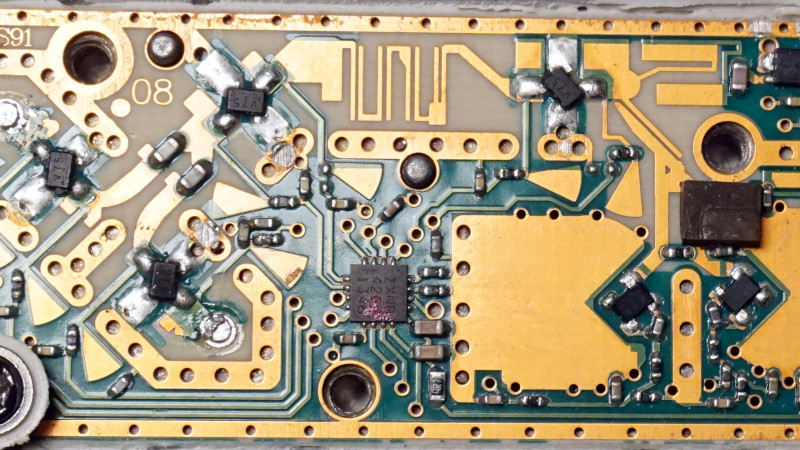There’s something of a mystique about RF construction at the higher frequencies, it’s seen as a Black Art only practiced by elite wizards. In fact, UHF and microwave RF circuitry is surprisingly simple and easy to understand, and given the ready availability of low-noise block downconverters (LNBs) for satellite TV reception there’s even a handy source of devices to experiment on. It’s a subject on which [Polprog] has brought together a handy guide.
A modern LNB has some logic for selecting one of a pair of local oscillators and to use vertical or horizontal polarization, but remains otherwise a very simple device. There’s an oscillator, a mixer, and an RF amplifier, each of which uses microwave transistors that can with a little care be repurposed. The page demonstrates a simple transmitter, but it’s possible to create more powerful devices by using the amplifier stage “in reverse”.
Meanwhile the oscillator can be moved by loading the dielectric resonators with PVC sleeving, and the stripline filters can even be modified with a fine eye for soldering and some thin wire. Keep an eye out in thrift stores and yard sales for old satellite dishes, and you can give it a go yourself. It’s a modern equivalent of the UHF tuner hacking enjoyed by a previous generation.
















I literally told my son “RF is black magic” today. Maybe I’ll give it a try….
Wow, I never thought I would get featured on HaD! I’m glad you all liked my small hack. I’m planning to see if I can receive some satellite signals using these LNBs and if I can modulate some signal to make a low power transmission using that modded LNB.
As a “black magic” person myself (coming from a s/w / digital background) I found this very interesting, thank you. I much appreciate a good write-up for this sort of thing rather than a youtube video too.
Excellent article! Reminds me of Junk Day, which occured 4 times a year in the town I grew up in. Me and my nerdy friends would ride around on our bikes, filling the metal baskets with plunder from the old RCA and Zenith TV’s and Hi-fi’s. Those 6SN7’s and 5U4’s ,etc became fodder for the ham rigs. Now it’s pulling whatever looks repurposeable from wifi routers, PC’s , anything else. No supply -chain issues here!
I had a Schwinn Stingray with a wire basket mounted over the rear wheel (think: elementary-school-kid-pickup-truck) Trash day was Monday. I lost count of all the stereos, recorders, TVs, and unidentified electrical stuff I dragged home. The things I learned from years of tearing that stuff apart is as responsible for a successful engineering career as my formal education.
Becoming the ultimate candidate for an episode of hoarders.
UHF is more black magic to me than microwave. Rip open any microwave device and you’ll already have a nice playground of well-matched connectors and a low-loss PCB. I’ve built 100+ incredibly good bias-tees out of old directional couplers that’d beat the pants out of most of the fully-packaged components, for instance. And microwave is fairly unforgiving so if you don’t do something right you’ll know it.
The problem with UHF (0.1-1 GHz) is that you’re in the nasty transition region where stuff *starts* to matter. Some guy can throw down components randomly on a multilayer FR4 board and it’ll work fine, but then move a connector 2 inches and you lose a third the signal because you actually had a bad impedance match and didn’t realize it because the distance was too close.
Reminds me of Jeri’s work on radar: https://hackaday.com/2010/12/03/make-your-own-tsa-naked-scanner/
“Keep an eye out in thrift stores and yard sales for old satellite dishes,…”
Don’t spend money on LNBs with an unknown history. New ones can be had for less than 5€.
The problem with the Dro’s is their lack of frequency stabilty
with the PLL chips they have no access to LO…
Naw,the magic is the low frequencies. I can’t even find ULF, VLF or LF devices to play with